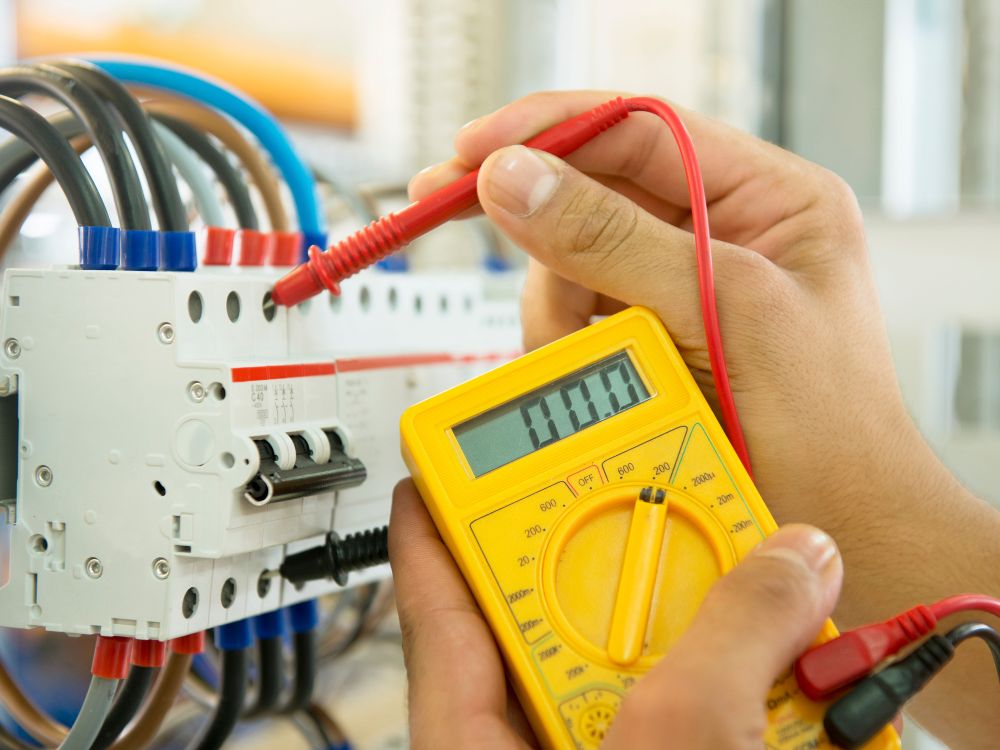Electrical issues Introduction :

Electrical issues can be both frustrating and potentially dangerous in both residential and commercial buildings. Whether you’re a homeowner or a business owner, understanding common electrical problems and how to address them is essential for maintaining a safe and functional space. In this comprehensive guide, we will explore some of the most frequent electrical issues that can arise, their potential causes, and practical solutions for fixing them. Keep in mind that electrical work can be hazardous, so if you’re unsure about any aspect of troubleshooting or repair, it’s always best to consult a qualified electrician.
Circuit Overloading :
One of the most prevalent electrical issues is circuit overloading. This occurs when too many devices or appliances are connected to a single circuit, causing it to trip frequently or even posing a fire risk. To address this issue, you can redistribute your devices across multiple circuits or upgrade your electrical panel to accommodate higher loads. A qualified electrician can help determine the best solution for your specific situation.
Frequent Circuit Breaker Tripping :
If your circuit breaker frequently trips, it may indicate a more significant underlying problem. This can be caused by faulty appliances, a short circuit, or ground faults. To identify the source of the issue, unplug all devices on the affected circuit and reset the breaker. If it continues to trip, consult a professional electrician to diagnose and repair the problem.
Flickering Lights :
Flickering lights can be annoying and indicate various issues. Loose or damaged bulbs, faulty switches, or loose wiring connections can be the culprits. Start by checking and tightening light bulbs and switches. If the problem persists, inspect the wiring connections in the affected area and replace any damaged components.
Electrical Outlets Not Working :
When electrical outlets stop working, it can disrupt your daily activities. This issue can result from a tripped GFCI (Ground Fault Circuit Interrupter) outlet, a damaged outlet, or a circuit overload. Begin by resetting any tripped GFCI outlets in the area. If that doesn’t solve the problem, inspect the outlet for visible damage and replace it if necessary. If the issue persists, consult an electrician to check for circuit problems.
Wiring Problems :
Faulty or deteriorating wiring can lead to various electrical issues, including power surges, sparks, or even electrical fires. Signs of wiring problems may include burning odors, discolored outlets, or visible damage to wiring insulation. Addressing wiring problems requires professional expertise. An electrician can inspect your wiring, identify issues, and recommend necessary repairs or rewiring.
Power Surges :
Power surges can damage sensitive electronic devices and appliances. They can result from lightning strikes, utility grid issues, or even faulty wiring. Installing surge protectors at electrical panels and using power strips with surge protection can help safeguard your equipment. If power surges persist, consult an electrician to assess your building’s electrical system.
Conclusion :
Understanding and addressing common electrical issues in residential and commercial buildings is crucial for maintaining a safe and functional environment. While some problems can be resolved with basic troubleshooting, others require the expertise of a qualified electrician. Regular maintenance and periodic electrical inspections can help prevent many of these issues from occurring in the first place. Remember that electrical work can be hazardous, so prioritize safety and consult professionals when in doubt. By staying vigilant and proactive, you can ensure that your electrical systems operate smoothly and securely for years to come.
Explore more informative articles by checking out our other blog posts.
